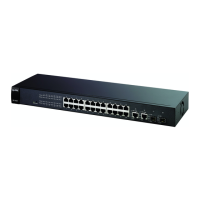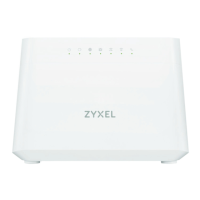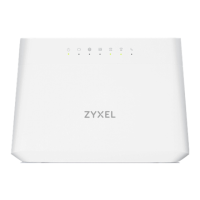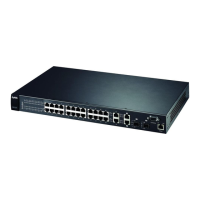Ethernet Switch CLI Reference Guide
221
CHAPTER 53
Policy Route Commands
Use these commands to configure policy route to override the default routing behavior and
alter the packet forwarding. Policy-based routing is based on the classification of traffic flows
and applied to incoming packets prior to the normal routing. A classifier distinguishes traffic
into flows based on the configured criteria.
Configure layer-3 classifiers before you configure policy routing. See Chapter
11 on page 59 for more information on classifiers.
53.1 Command Summary
The following section lists the commands for this feature.
Table 123 policy-route Command Summary
COMMAND DESCRIPTION M P
show ip policy-route Displays all policy routing profile settings. E 3
show ip policy-route <name> Displays the specified policy routing profile settings.
name: 32 alphanumeric characters
E3
show ip policy-route <name>
sequence <number>
Displays settings for the specified policy routing rule in a
profile.
sequence: sets the rule number from 1 to 64. The ordering of
policy routing rules is important as rules are applied in turn.
E3
ip policy-route <name> Sets a a policy routing profile with the specified name. You
must configure a profile before you can configure a rule.
C13
ip policy-route <name> inactive Disables a policy routing profile. C 13
ip policy-route <name> sequence
<number> <permit|deny>
classifier <classifier> next-hop
<ip-addr>
Configures a policy routing rule in the specified profile.
permit|deny: turns on or off this policy routing rule.
classifier: sets the name of active layer 3 classifier to
which this rule applies.
next-hop: sets the IP address of the gateway to which the
Switch forwards the matched traffic.
C13
no ip policy-route <name> Deletes the specified policy routing profile. C 13
no ip policy-route <name>
inactive
Enables a policy routing profile. C 13
no ip policy-route <name>
sequence <number>
Deletes a rule from the specified policy routing profile. C 13

